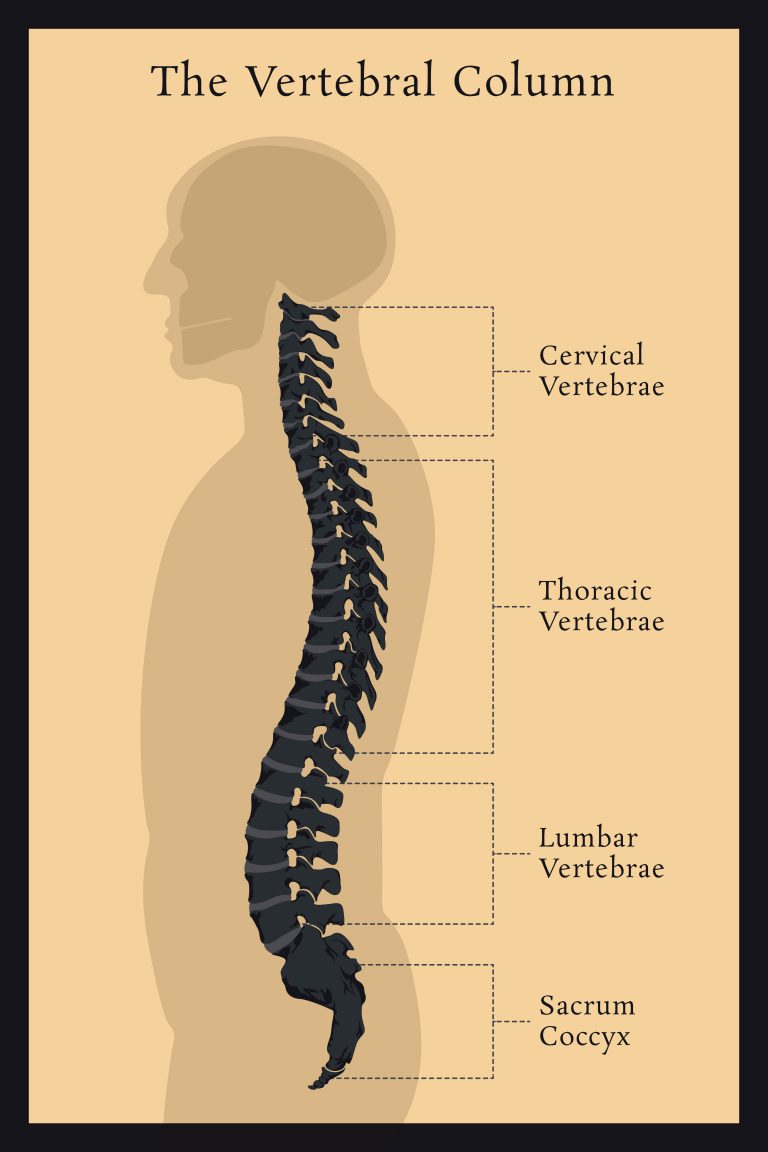
Masters in Exercise Science & Sports Physiotherapy
It’s been over 14 months, and a lot of us have been working from home during these months. Modern lifestyle has its own set of advantages. From great technology to a convenient lifestyle, there’s a lot that has improved over the last few decades. All of these advancements have been a huge help in the past year. However, the downside of this technological evolution is its impact on our health.
The weight gain, stiff neck and back aches are not easy to get rid of.

Your spine is made up of three segments. When viewed from the side, these segments form three natural curves.
The “c-shaped” curves of the neck (cervical spine) and lower back (lumbar spine) are called lordosis. The “reverse c-shaped” curve of the chest (thoracic spine) is called kyphosis.
Illustration shows the regions of the spine. When viewed from the side, the normal spine has three gentle curves.
These curves are important for balance and they help us to stand upright. If any one of the curves becomes too large or small, it becomes difficult to stand up straight and our posture appears abnormal.
The Thoracic Spine or T-Spine supports the primary muscles involved in helping you stand up straight, maintain proper posture when you’re sitting, walking with the correct gait, and—most importantly—protect your spinal column.
Our ability to walk straight is more complex than one leg swinging forward followed by the next leg.
When our right foot swings forward, the left arm swings forward. For the right foot to swing, there needs to be a little bit of rotation through the pelvis to the left. For the left arm to swing forward, the thoracic spine and shoulder rotate to the right. It’s this lovely, undulating motion that happens naturally with each step.
That’s a lot of left and rights, but the main point is this: our arms and legs work together to deal with the momentum that makes moving forward feel easy. The spine and pelvis rotate, allowing force from the ground to move up the skeleton and support the movements of the arms and the legs.
The nuances of rotation in the ribs and pelvis create an illusion of a linear path when actually, it is rotational.
With long hours of sitting, your glutes, hamstrings, quadriceps, adductors and abductors need mobility and activations to accomplish these rotational movements.
We have put together a few T Spine Rotation Activities for you to easily do at home. The below variations include some lunge variations, Back Planks etc. These exercises help in improving strength and stability in the Hips, Knees and ankles.
T SPINE ROTATIONS WITH LUNGE VARIATIONS
CERVICAL, CORE & COORDINATION
You Can view the Full Video here on Youtube!
© All Rights Reserved OSR Sportsworks Consulting LLP